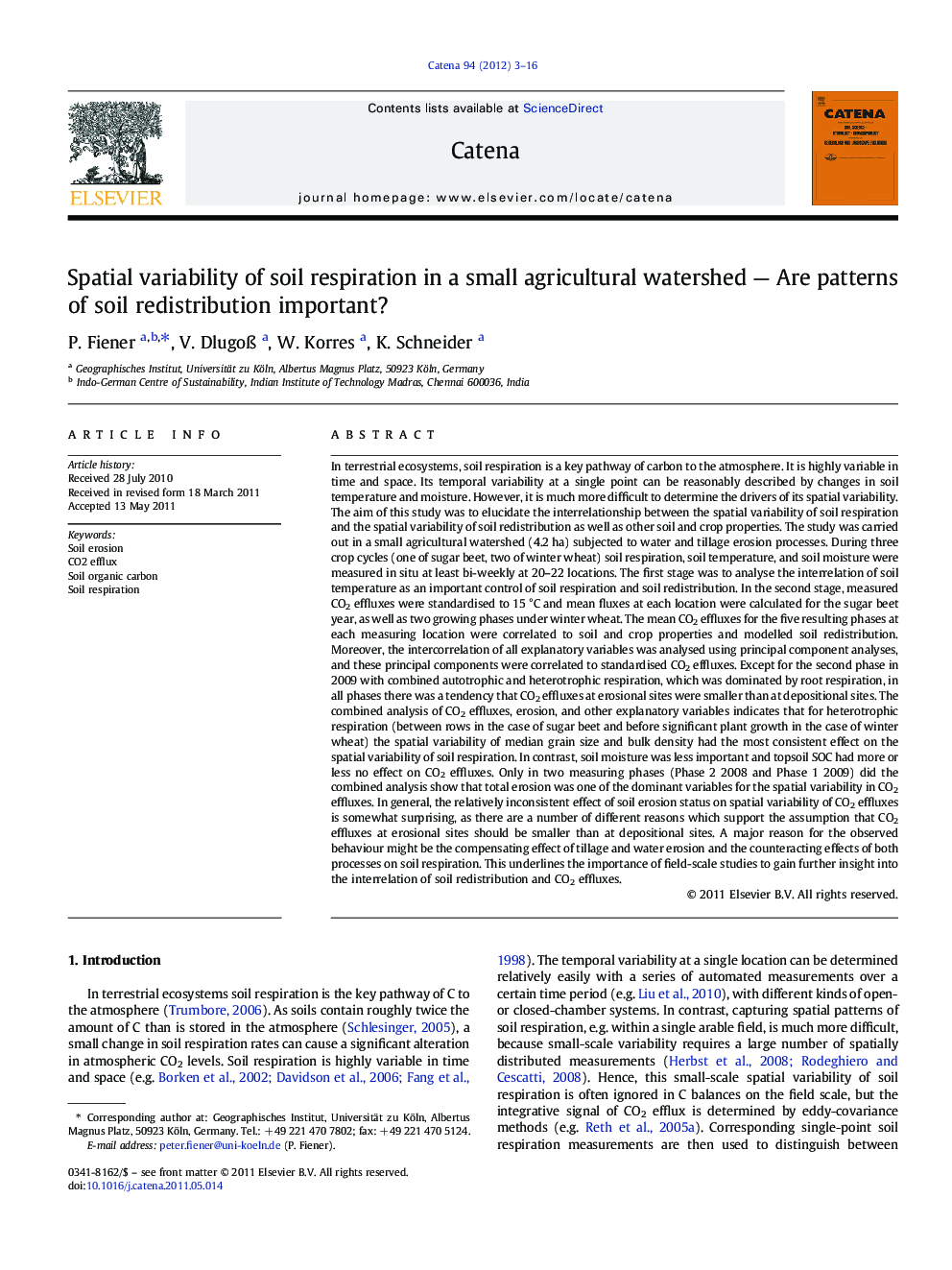| کد مقاله | کد نشریه | سال انتشار | مقاله انگلیسی | نسخه تمام متن |
|---|---|---|---|---|
| 4571790 | 1629258 | 2012 | 14 صفحه PDF | دانلود رایگان |

In terrestrial ecosystems, soil respiration is a key pathway of carbon to the atmosphere. It is highly variable in time and space. Its temporal variability at a single point can be reasonably described by changes in soil temperature and moisture. However, it is much more difficult to determine the drivers of its spatial variability. The aim of this study was to elucidate the interrelationship between the spatial variability of soil respiration and the spatial variability of soil redistribution as well as other soil and crop properties. The study was carried out in a small agricultural watershed (4.2 ha) subjected to water and tillage erosion processes. During three crop cycles (one of sugar beet, two of winter wheat) soil respiration, soil temperature, and soil moisture were measured in situ at least bi-weekly at 20–22 locations. The first stage was to analyse the interrelation of soil temperature as an important control of soil respiration and soil redistribution. In the second stage, measured CO2 effluxes were standardised to 15 °C and mean fluxes at each location were calculated for the sugar beet year, as well as two growing phases under winter wheat. The mean CO2 effluxes for the five resulting phases at each measuring location were correlated to soil and crop properties and modelled soil redistribution. Moreover, the intercorrelation of all explanatory variables was analysed using principal component analyses, and these principal components were correlated to standardised CO2 effluxes. Except for the second phase in 2009 with combined autotrophic and heterotrophic respiration, which was dominated by root respiration, in all phases there was a tendency that CO2 effluxes at erosional sites were smaller than at depositional sites. The combined analysis of CO2 effluxes, erosion, and other explanatory variables indicates that for heterotrophic respiration (between rows in the case of sugar beet and before significant plant growth in the case of winter wheat) the spatial variability of median grain size and bulk density had the most consistent effect on the spatial variability of soil respiration. In contrast, soil moisture was less important and topsoil SOC had more or less no effect on CO2 effluxes. Only in two measuring phases (Phase 2 2008 and Phase 1 2009) did the combined analysis show that total erosion was one of the dominant variables for the spatial variability in CO2 effluxes. In general, the relatively inconsistent effect of soil erosion status on spatial variability of CO2 effluxes is somewhat surprising, as there are a number of different reasons which support the assumption that CO2 effluxes at erosional sites should be smaller than at depositional sites. A major reason for the observed behaviour might be the compensating effect of tillage and water erosion and the counteracting effects of both processes on soil respiration. This underlines the importance of field-scale studies to gain further insight into the interrelation of soil redistribution and CO2 effluxes.
Research Highlights
► Soil respiration was measured bi‐weekly during three growing periods at 20–22 locations within a small agricultural watershed.
► Effects of differences in soil temperature & moisture, erosional & depositional status, plant & soil properties were analysed.
► Effects of spatial differences in soil temperature and moisture on soil respiration were marginal.
► Differences in median grain size and bulk density had the most consistent effect on soil respiration.
► During most measuring phases respiration was smaller at erosional compared to depositional sites
Journal: CATENA - Volume 94, July 2012, Pages 3–16